‘Enough of this plus!’ A paradigm shift at Australian fashion week | Australian fashion week
In 2021, Basjia Almaan, a model, started a fire on Instagram after taking Australian fashion week to task over its incremental approach to diversity in casting. A few years ago, a model unafraid to speak her mind might have faced professional sanctions. This year, it landed her a job as a casting director.
In addition to walking several shows, Almaan cast the runway at Iordanes Spyridon Gogos, assembling a roster of models, musicians, dancers and artists that played like the Australian equivalent of a Savage X Fenty show. Backstage after the show, her name was sung with praise, with her Instagram post cited as a challenge to do better.
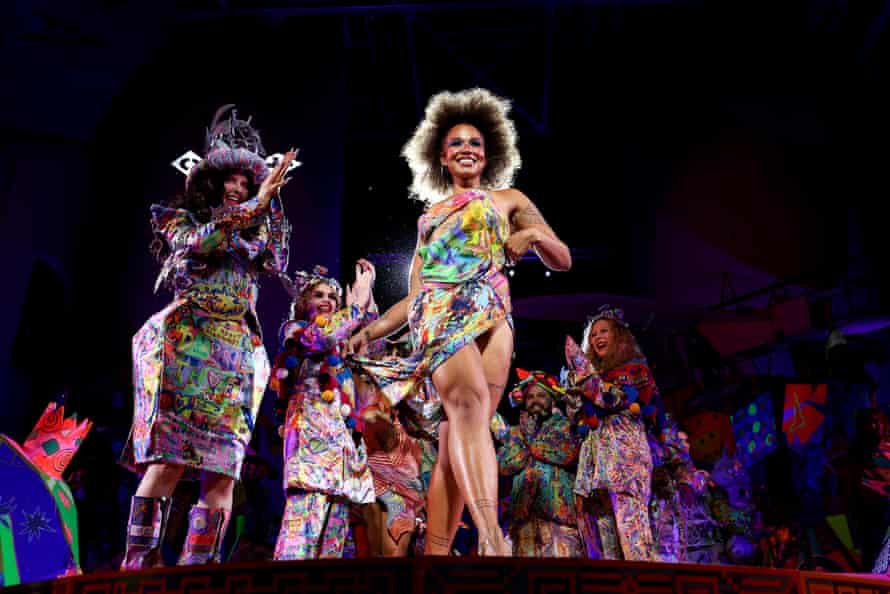
Earlier that day, as Almaan’s hair was being finished off for her appearance on the runway at Sydney label Nicol & Ford, she reflects on what a difference a year can make. “I’ve definitely seen a huge improvement when it comes to diversity,” she says. “It’s definitely taken a minute.”
In 2021, Australian fashion week featured – for the first time – two shows devoted to First Nations designers. Those shows returned in 2022, and this year’s presentations also included two notable firsts: a runway show dedicated to adaptive fashion, and the Curve Edit – a showcase of designers offering extended sizes to celebrate the 20th anniversary of size-diverse modelling agency Bella Management.
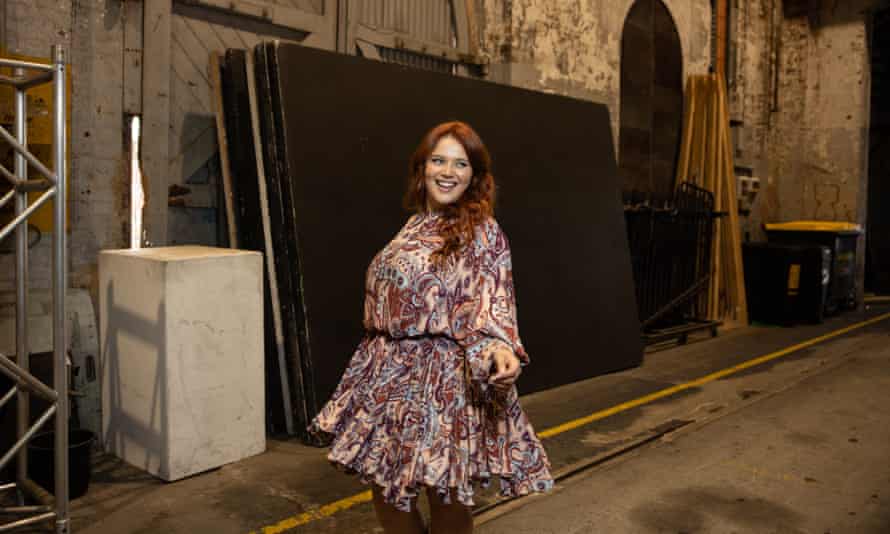
But the casting changes extended well beyond those shows. While there were still plenty of tall, slender bodies on the catwalks, the number of models who were bigger, shorter, or simply more hairy was unprecedented. While some shows featured only a handful of non-traditional models, at others, if you were asked to describe what a model looked like, the only shared adjectives would be “confident”.
“I’ve noticed that the casting is a lot more diverse in terms of … body size, in terms of ethnicity, which has been incredible to see,” Almaan says.
Backstage at the Curve Edit, Robyn Lawley, one of Australia’s most successful models, also noticed the change. “It’s finally happened! It’s here, it’s here to stay,” she says. “Looking at all the runways this week, they’re going to cement that change. Because diversity, and actually seeing it on the runway looks incredible.” In a tone mimicking the voice of a hypothetical industry insider, she says “they’re like, ‘oh, it does look good. Our clothes do look good.’”
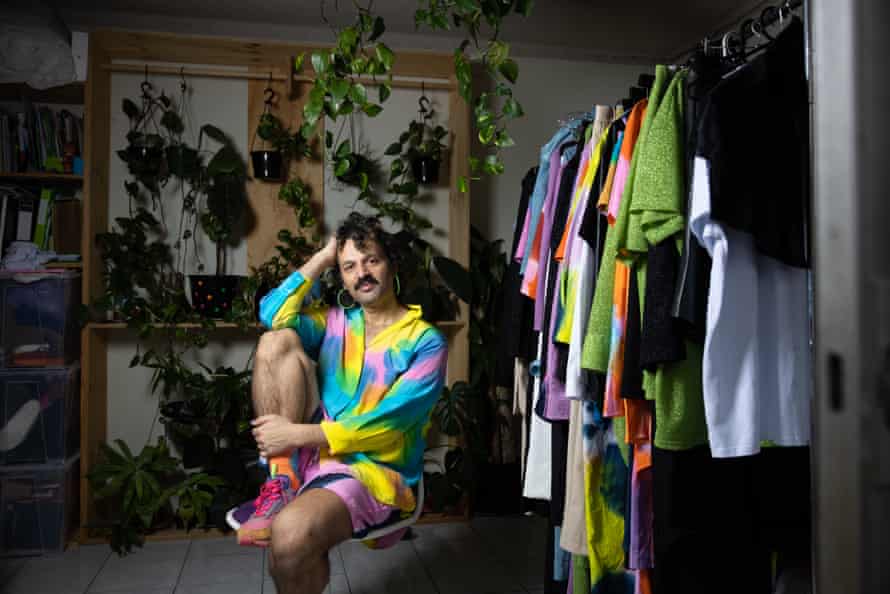
Gary Bigeni, a designer, made a return to fashion week on 10 May for the first time in five years. Between a cancer diagnosis and the pandemic, it was not an easy period for the designer, but it was immensely clarifying: he studied youth work and started teaching fashion classes.
“We can talk about a lot of things,” he says, “but a lot of those things aren’t put into action … coming back I wanted to do something.”
He presented his colourful, hand-painted, genderless clothing on models of many ages, races and sizes – “I wanted it to be something that everyone could approach and buy from.” But the collection represented diversity in a different way too: he was showing a new way of doing business.
Abandoning the usual ambitions of growth, Bigeni’s business model is now made-to-order only. He creates a single garment, photographs it, and then only makes that piece again when someone orders it online, allowing him to tailor each garment to a customer’s needs. It’s a completely different way of working from a mass or even small-scale production model, and has reinvigorated his love for his craft.
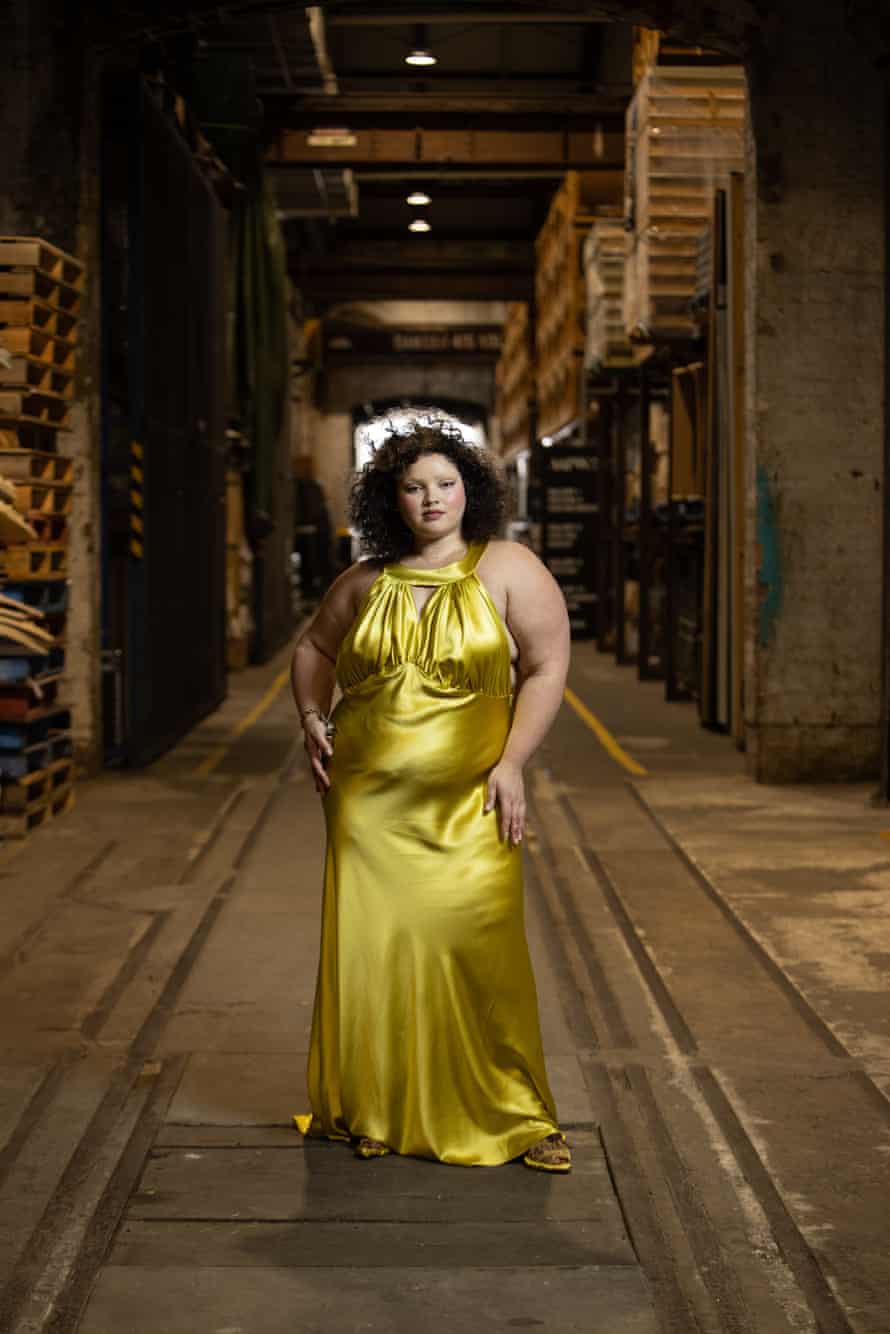
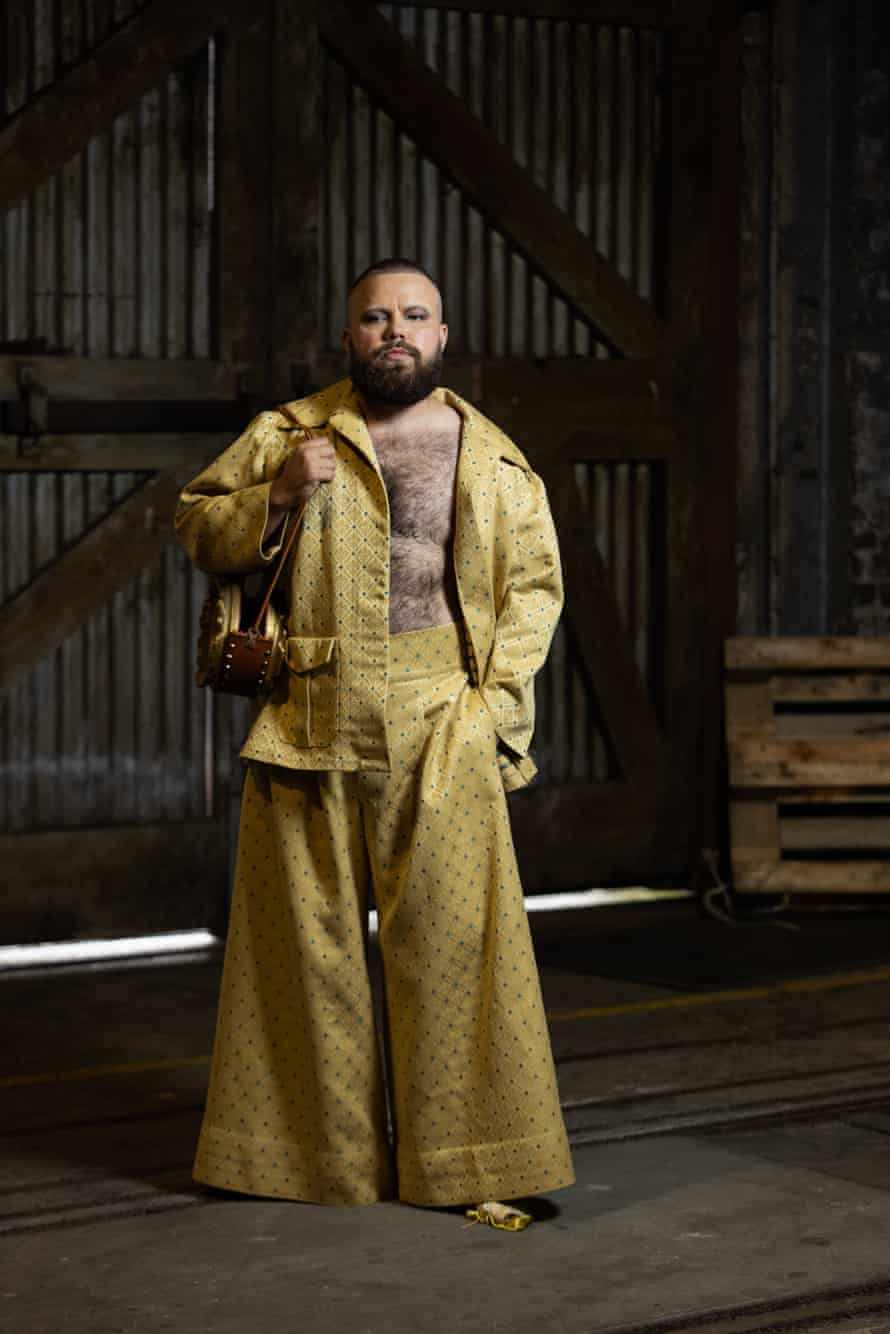
Photograph: Carly Earl/The Guardian
Timothy Hugh Nicol and Katie-Louise Ford of Nicol & Ford are also a mostly made-to-order business. Almaan says the bodysuit she modelled for their show was “probably my favourite look that I’m wearing … because it was made custom to my body”.
Custom-made was the order of the day at the Adaptive Edit too. The designers behind Jam the Label and Christina Stephens created each look in collaboration with the model wearing it to suit their individual needs: from side zips and magnetic closures for easier fastening and unfastening, to high-cropped jackets to accommodate wheelchair users.
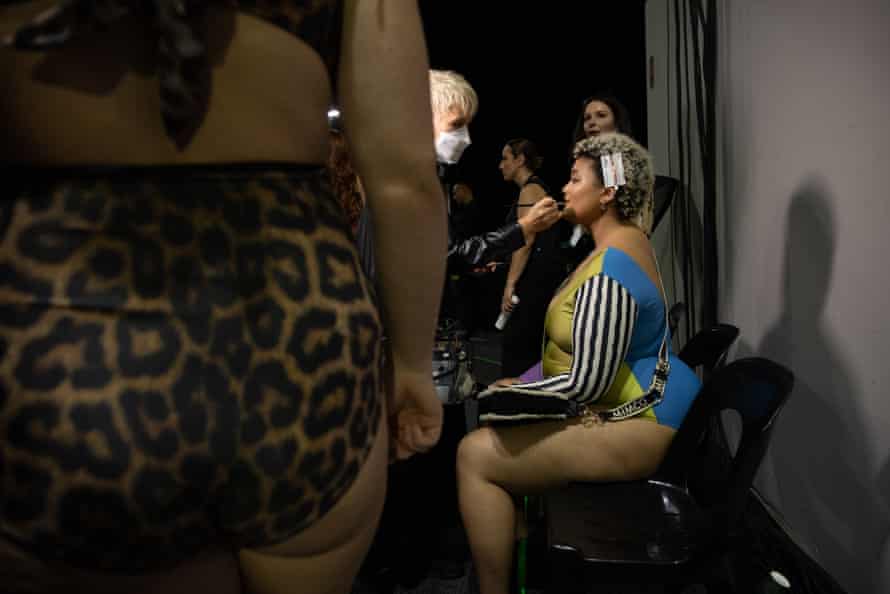
Two of the models who walked for the first time this year at fashion week told Guardian Australia that shopping is frustrating for them due to Australia’s limited sizes. Given the significant captive market brands that do cater to extended sizes now enjoy, it’s easy to imagine the more inclusive sizing showcased by mainstream and independent fashion brands wouldn’t be a welcome development.
Not so, says Sophie Henderson-Smart, a designer specialising in size-inclusive swimwear under the label Saint Somebody, who showed at fashion week for the first time.
She says that this year marks a turning point, but, “the big difference with mainstream brands using curvy models on the runway is … their sample is still a size eight and they would grade that up.”
“Whereas my sample size is a 16, and then I grade down and up from there. The fashion we’re creating is mindfully designed for a curvy body specifically.”
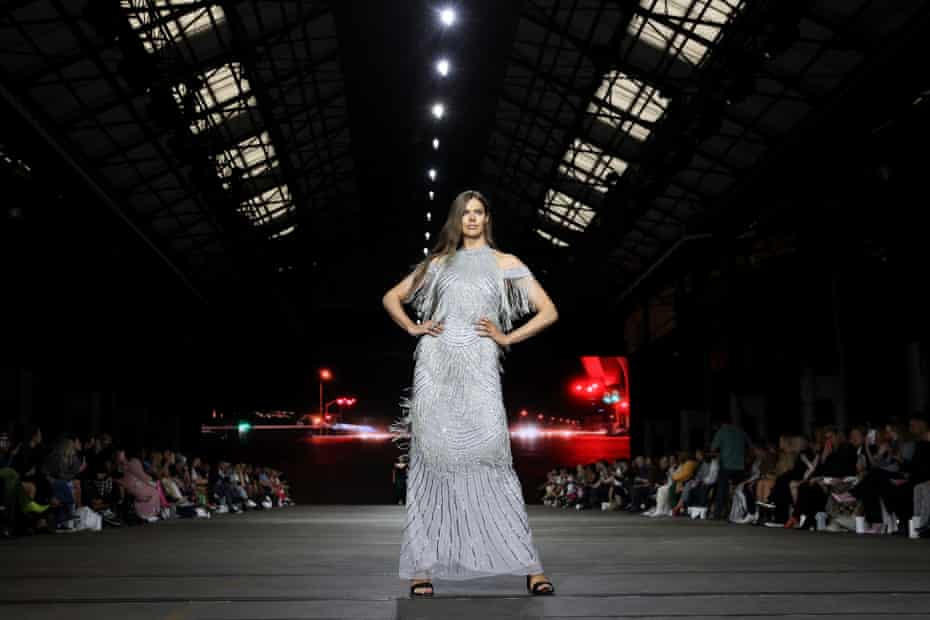
Martin James, who runs four size-inclusive evening wear labels and created a beaded, 1920s inspired gown for Lawley, agreed. “Competition makes life healthy … It’s about time brands or companies don’t discriminate on size.”
Although she will use the term in certain contexts, Henderson-Smart believes it is time for the industry to abandon the phrase “plus size”. “I’m not a big fan of the words,” she says. “We just need to know sizes in numbers … What size am I? Do they make it? I’m going to buy it.”
Bigeni puts it more bluntly: “The language we’re using is all really fucked up.”
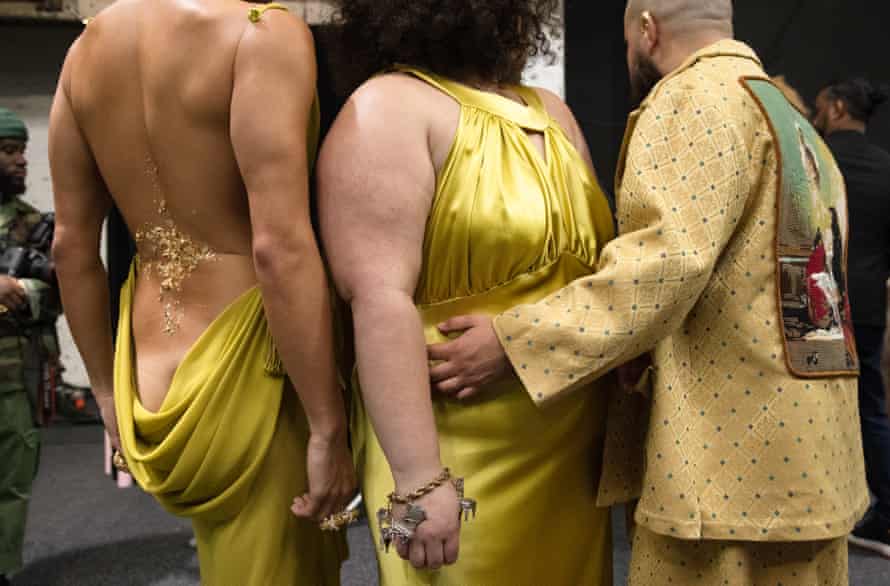
So what do you call a model if they’re not tall and thin? Almaan proposed a simple solution: actually asking the individuals in question.
“I think everyone prefers different things,” she says. Pointing to Mia Dennis as an example: “she’s classified as a curve model, but she’s like, ‘just call me a fat model’.”
“I prefer the term,” Dennis says. “I like to use the word fat because it’s a sense of reclamation for me. Being called that all the time as a kid by my family and peers, using that language to describe myself, and for it not to be a derogatory term, is something I find really powerful.”
While this year’s changes were a start, Almaan says there is still a long way to go. She points to the line-up of designers showing, and the audience attending. “Think about who created fashion – Black and brown people … every year there’s got to be more.”
Dennis agrees. “There’s almost this thing of starting off slow. I think that’s stupid. I think that’s colonial. I think it’s really outdated. We deserve to take up the space, because we’ve been excluded for such a long time.”
“The industry needs to stop creating this aspirational aspect of bodies. We should be aspiring to a space where everyone can feel seen.”
